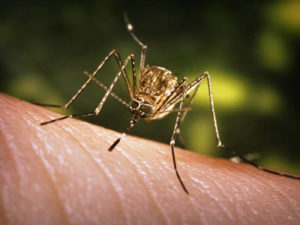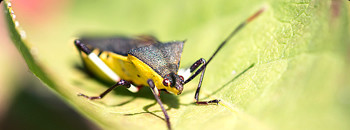There’s a saying we like to use in Texas that goes a little something like this: “If you don’t like the weather in Texas, just wait five minutes. It’ll change!” It’s true – we have wild weather here in the Lone Star State, and chances are wherever you live, you too are experiencing shifts in the weather.
More than a mere nuisance, our ever-changing climate can bring with it an extended breeding period for mosquitoes and continued risk of mosquito-borne illnesses like West Nile virus. In fact, these nighttime biters carrying West Nile virus are at their peak in the summer and fall months.
Here’s what we know about the current state of this year’s West Nile outlook. The Centers for Disease Control and Prevention puts the number of confirmed cases of West Nile virus here in the U.S. at 1,264 as of Oct. 11. More alarming are the reported 49 deaths across 46 states. Texas currently has the highest number of WNV cases with 195 total cases, followed by California with 161, then South Dakota with 143. Each week the CDC updates the West Nile case count by state.
Now, unlike the Zika virus, West Nile cannot be transmitted through person-to-person contact. It is primarily transmitted through the bite of infected mosquitoes and, more rarely, through blood infusions or exposure in medical lab settings.
West Nile and Zika show similarities in that both display few signs or symptoms in most cases. The CDC reports that 70-80% of people infected with West Nile virus do not develop symptoms. This is similar to the four in five people infected with Zika who also do not show signs or symptoms.
When symptoms do develop, it’s typically within two to six days after the bite, but the period can be longer. Those infected with West Nile often feel like they have the flu and develop fever, headache, vomiting, joint pain, weakness, and fatigue.
Children and the elderly, as well as those with compromised immune systems, are most at risk for contracting severe illnesses from West Nile virus. As a mother of four, it’s always a little scary to consider that I can’t treat my family or myself if I don’t realize we’re impacted. The great news is that taking preventative action removes the fear of mosquito-borne illness.
There are things we can do right now, on a daily basis, to protect our kiddos and ourselves. The easiest and most cost-efficient measures are also the most effective.
- Dress to protect. That means long-sleeved shirts, pants, and boots when outdoors. Hey, I live in Texas, and those of us in the southern U.S. are still experiencing waves of heat. If we can do it, our friends further north can too.
- Don’t shy away from insect repellent. Repellents approved by the Environmental Protection Agency can be a lifesaver – literally. DEET is a solid option, and oil of lemon eucalyptus is a natural alternative for use on children over the age of 3 years old. Reapply it as directed – especially if you’re sweating, spending time in the water, or wearing sunscreen. RISE (Responsible Industry for a Sound Environment) provides more tips here.
- Safeguard your home. It doesn’t get much better than open windows on a crisp fall day – better make sure those windows have screens! Trust me, if there is a way inside your home – a mosquito will find it. Keep screens on windows and doors, and take care to repair any holes.
- Dump standing water around your home. Autumn rains amount to a lot of standing water – the perfect breeding ground for mosquitoes. Check out this blog to see how my 4-year-old twin girls mastered the art of spotting mosquito larvae in our backyard.
Whether you’re donning your favorite scarves and sipping pumpkin spice lattes or just dreaming of it, continue to be proactive by protecting yourself and your family this fall season.
This is a guest post written by Sonja Swiger, PhD at Texas A&M AgriLife Extension.

